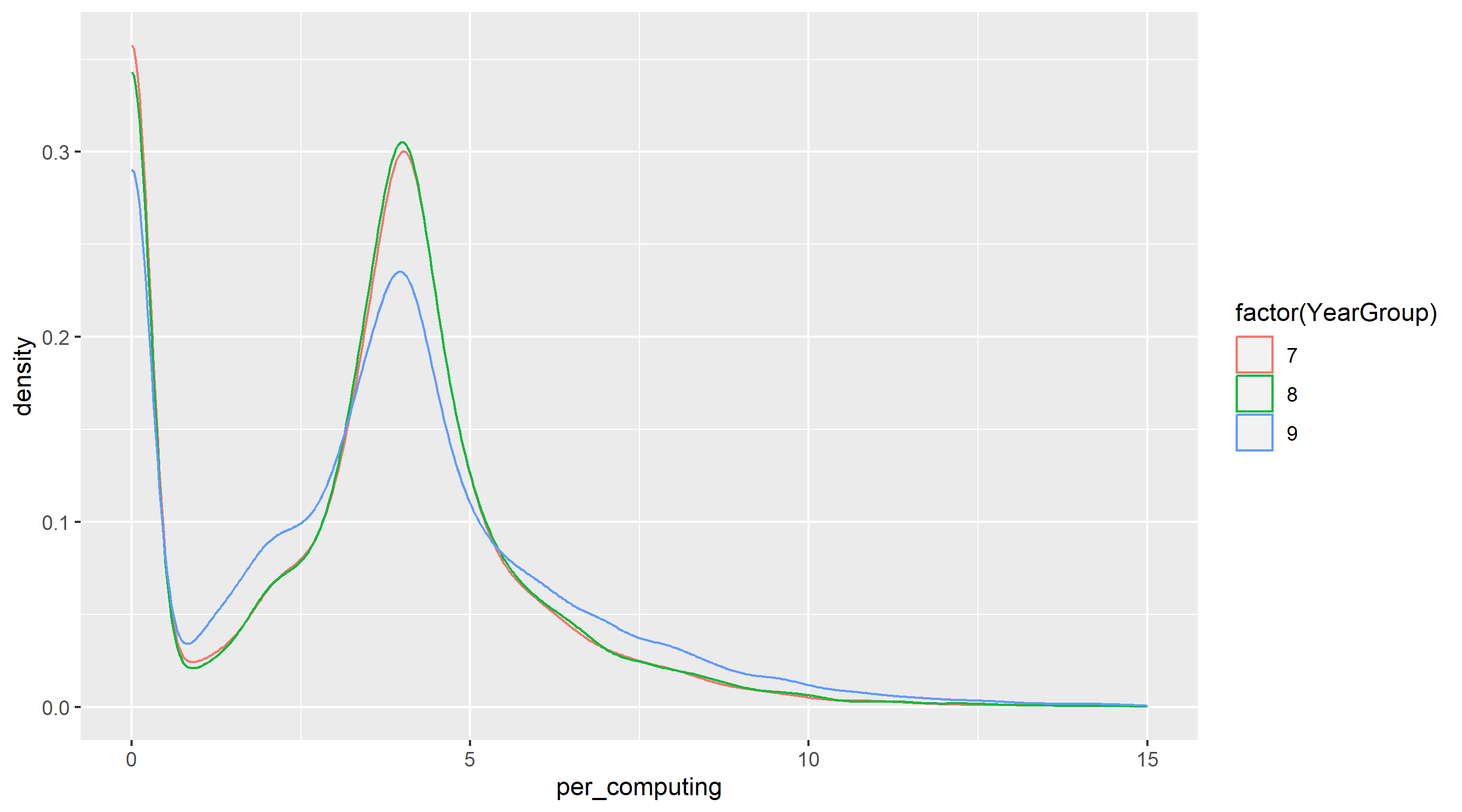Hours of computing
It has been noted that the change in curriculum has been accompanied by a substantial decline in the number of hours of taught computing across key stages (Kemp and Berry 2019; Royal Society 2019). This section updates previous work and explores where the cut in hours has happened by looking at hours taught to individual year groups.
1 Overall
The hours taught has dropped across all key stages, but the drop has been most pronounced in KS4, which saw further decline between 2019/20 and 2022/23, now sitting at 43 % of the 2010 figure. There have been slight increases in KS3 and KS5 provision since 2019, with hours now sitting at 84 % and 76 % of their 2010 figures, respectively.
data
Hours taught by year group show that the main drop KS3 hours appears to be the drop in year 9 provision, the final year of the key stage and sometimes the first year of GCSE provision. This suggests that a substantial explanation of the decline is due to the drop in three year GCSEs and other qualifications in computing. Previous reporting on overall KS3 figures (Kemp and Berry 2019; DfE 2019) hid this pattern.
data
Overall provision in a school of any computing lessons during the census period shows that 91 % of schools had some provision at KS3 in 2011, this had decreased to 78 % in 2019, and recovered slightly to 81 % in 2022. This might partly be explained by schools running carousel timetables, with computing timetabled for the spring rather than the summer. However, the substantial difference between 2011 and 2019 suggests a real decline in provision over that period.
2 Key stage 3
The number of hours of computing as a percentage of a school’s timetable shows that the most common percentage was around 4 % of a weekly timetable, with another peak around 2 %. If the average weekly timetable is taken to be 25 teaching hours, 4 % equates to 1 hour a week, and 2 % to 30 minutes. Many schools offered no provision for this census period.

3 Gender
When we look at the distribution of the number of hours in a teacher’s timetable dedicated to teaching a subject, we see a substantial difference between male and female computing teachers and computing teachers and teachers of other subjects. Computing teachers typically have a lower proportion of their timetable dedicated to computing than teachers of other subjects. The median % of hours taught is ~74 % for males computing teachers and ~64 % for females, compared to ~100 % for maths and science teachers. There is a bunching of computing teachers around the 10 % timetable mark, more so than in the other comparison subjects, suggesting that many computing teachers are teaching other subjects as well, for the majority of their timetables.
